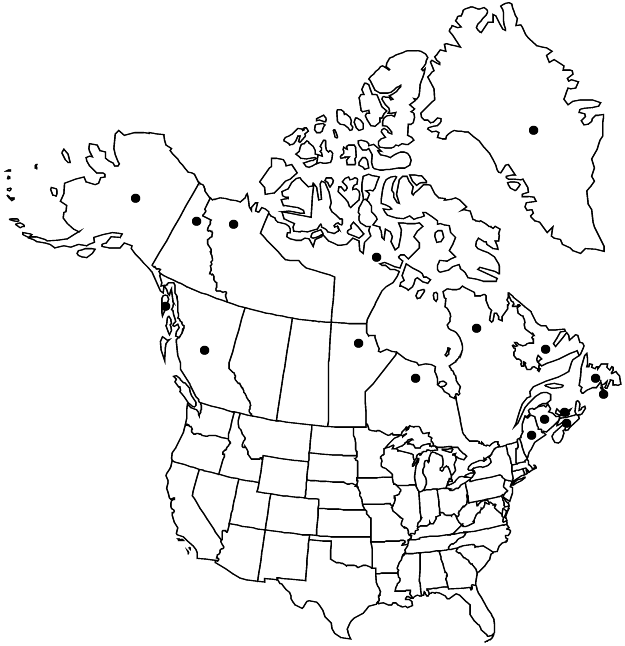Difference between revisions of "Stellaria humifusa"
Skr. Kiøbenhavnske Selsk. Laerd. Elsk. 10: 447, plate 4, fig. 14. 1770.
FNA>Volume Importer |
imported>Volume Importer |
||
| (2 intermediate revisions by 2 users not shown) | |||
| Line 66: | Line 66: | ||
|publication year=1770 | |publication year=1770 | ||
|special status= | |special status= | ||
| − | |source xml=https:// | + | |source xml=https://bitbucket.org/aafc-mbb/fna-data-curation/src/2e0870ddd59836b60bcf96646a41e87ea5a5943a/coarse_grained_fna_xml/V5/V5_220.xml |
|subfamily=Caryophyllaceae subfam. Alsinoideae | |subfamily=Caryophyllaceae subfam. Alsinoideae | ||
|genus=Stellaria | |genus=Stellaria | ||
Latest revision as of 22:09, 5 November 2020
Plants perennial, forming small to large mats or clumps, from slender rhizomes. Stems decumbent, freely branched, square, 2–20 cm, glabrous, rooting at proximal nodes. Leaves sessile; blade elliptic to elliptic-lanceolate, 0.4–1.5 cm × 1–5 mm, succulent, base cuneate to rounded, margins entire, apex acute to obtuse, glabrous or with few cilia along margins. Inflorescences with flowers solitary in axils of foliage leaves; bracts absent. Pedicels ascending, straight or nearly so, usually 5–10(–30) mm, glabrous. Flowers ca. 10 mm diam.; sepals 5, prominently 1–3-veined, lanceolate, 4–5 mm, margins convex, narrow, scarious, apex acute, glabrous; petals 5, 4–6 mm, equaling sepals; stamens 10; styles 3, ascending and outwardly curved, 1–1.5 mm. Capsules straw colored, ovoid, 4–5 mm, equaling sepals, apex obtuse, opening by 6 valves; carpophore absent. Seeds pale brown, broadly and obliquely reniform, 0.8–1 mm diam., smooth to slightly rugose. 2n = 26.
Phenology: Flowering summer.
Habitat: Lake shores, beaches, marshes, salt marshes, mainly northern coastal
Elevation: 0-100 m
Distribution

Greenland, St. Pierre and Miquelon, B.C., Man., N.B., Nfld. and Labr., N.W.T., N.S., Nunavut, Ont., P.E.I., Que., Yukon, Alaska, Maine, arctic Europe, Asia (Russian Far East, Siberia).
Discussion
Stellaria humifusa is often confused with S. crassifolia, but has thicker stems and fleshy leaves that wrinkle and tend to turn brownish when dried. Also, in S. crassifolia the long pedicels are very slender and sharply angled below the capsule.